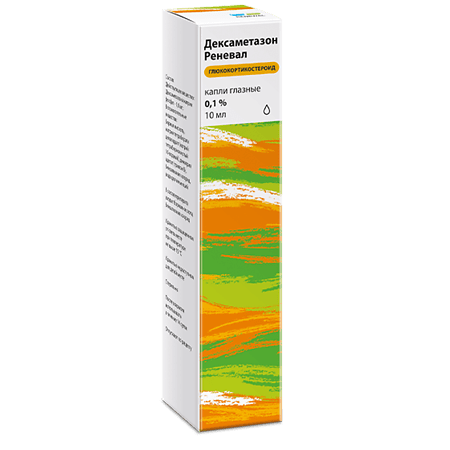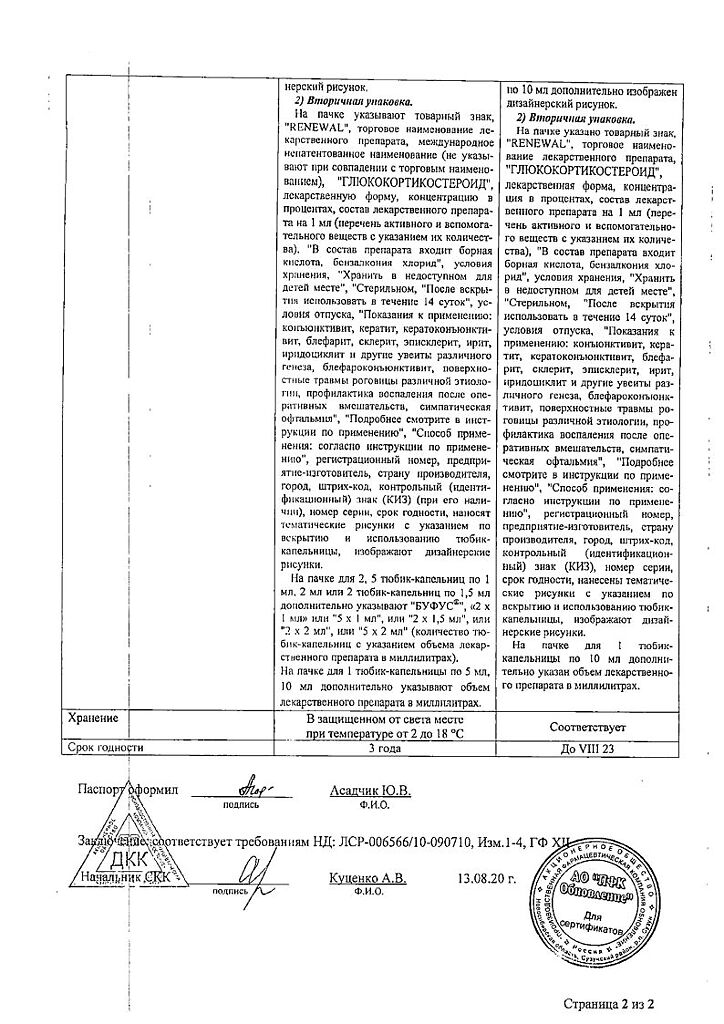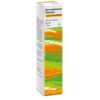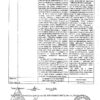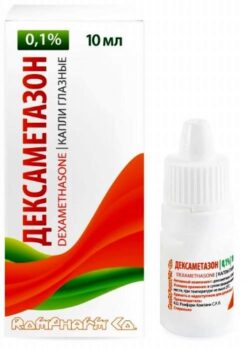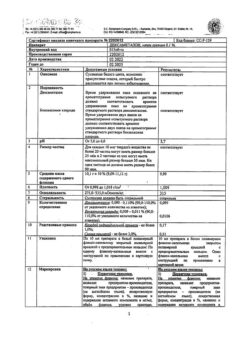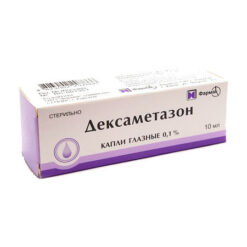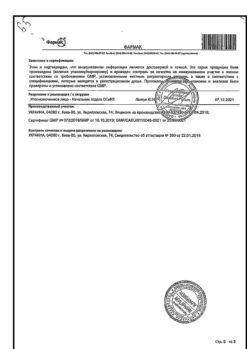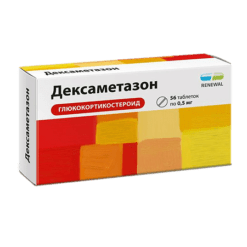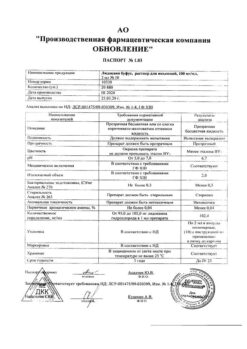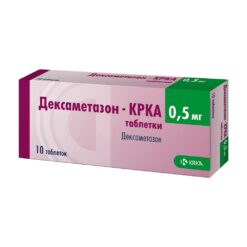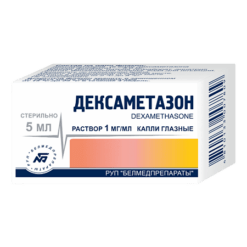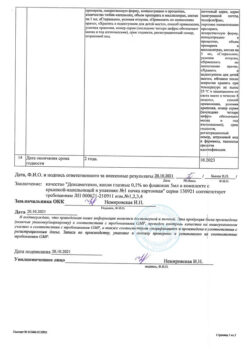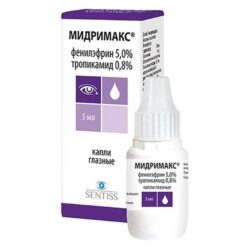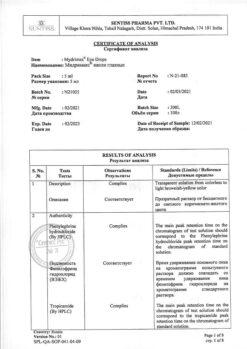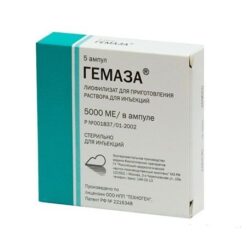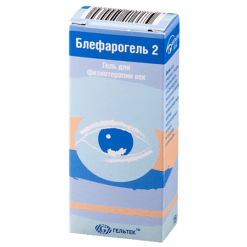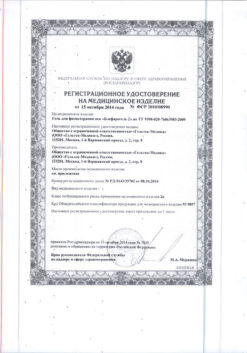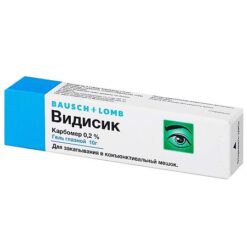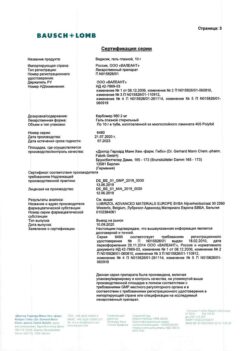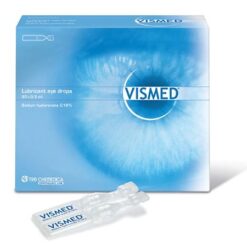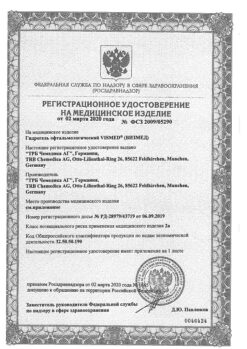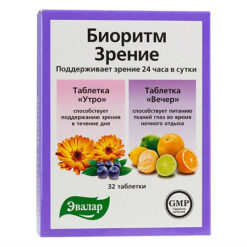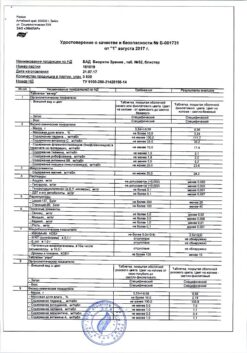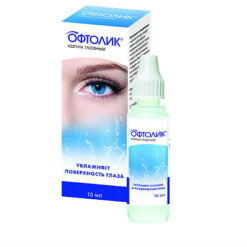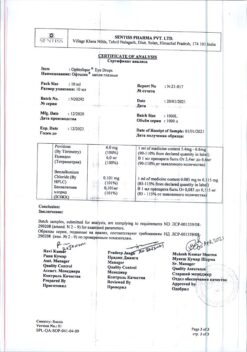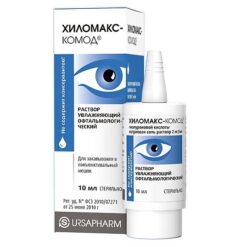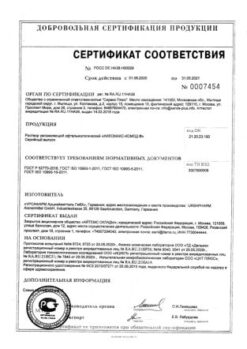No products in the cart.
Dexamethasone Reneval, eye drops 0.1% 10 ml
€6.87 €6.01
Description
Pharmacodynamics
Fluorinated glucocorticosteroid, has a pronounced anti-inflammatory, anti-allergic and anti-exudative effect. Interacting with specific protein receptor in target tissues it regulates the expression of corticoid-dependent genes and thus affects protein synthesis. It decreases formation, release and activity of inflammatory mediators (histamine, bradykinin, prostaglandins, lysosomal enzymes).
Inhibits cell migration to the site of inflammation, decreases vasodilation and increased vascular permeability in the inflammation area. Stabilizes lysosomal enzymes in leukocyte membranes, inhibits antibody synthesis and disrupts antigen recognition. Inhibits release of interleukin-1 and interleukin-2, interferon gamma from lymphocytes and macrophages.
Induces lipocortin formation, inhibits release of inflammatory mediators by eosinophils and stabilizes mast cell membranes. All of these effects are involved in suppressing the inflammatory response in tissues in response to mechanical, chemical or immune damage. Duration of anti-inflammatory action after 1 drop of solution is 4 to 8 h.
Pharmacokinetics
After injection into the conjunctival sac it penetrates well into corneal epithelium and conjunctiva; therapeutic concentrations are reached in aqueous humor of eye; when inflammation or mucous membrane damage occurs the penetration rate increases. About 60-70% of dexamethasone entering the systemic bloodstream is bound to plasma proteins.
Metabolized in the liver under the action of cytochrome-containing enzymes; metabolites are excreted through the intestine. The elimination half-life is on average 3 hours.
Indications
Indications
Conjunctivitis (non-purulent and allergic), keratitis, keratoconjunctivitis (without damage to the epithelium), blepharitis, scleritis, episcleritis, iritis, iridocyclitis and other uveitis of various origins, blepharoconjunctivitis, superficial corneal injuries of various etiologies (after complete epithelization of the cornea), prevention of inflammation after surgical interventions, sympathetic ophthalmia.
Pharmacological effect
Pharmacological effect
Pharmacodynamics
A fluorinated glucocorticosteroid has a pronounced anti-inflammatory, anti-allergic and anti-exudative effect. By interacting with a specific protein receptor in target tissues, it regulates the expression of corticoid-dependent genes and thus affects protein synthesis. Reduces the formation, release and activity of inflammatory mediators (histamine, bradykinin, prostaglandins, lysosomal enzymes).
Suppresses cell migration to the site of inflammation; reduces vasodilation and increased vascular permeability at the site of inflammation. Stabilizes lysosomal enzymes of leukocyte membranes; suppresses antibody synthesis and disrupts antigen recognition. Inhibits the release of interleukin-1 and interleukin-2, interferon gamma from lymphocytes and macrophages.
Induces the formation of lipocortin, inhibits the release of inflammatory mediators by eosinophils and stabilizes mast cell membranes. All of these effects are involved in suppressing the inflammatory response in tissues in response to mechanical, chemical or immune damage. The duration of the anti-inflammatory effect after instillation of 1 drop of solution is from 4 to 8 hours.
Pharmacokinetics
After instillation into the conjunctival sac, it penetrates well into the corneal epithelium and conjunctiva; at the same time, therapeutic concentrations are achieved in the aqueous humor of the eye; with inflammation or damage to the mucous membrane, the penetration rate increases. About 60-70% of dexamethasone entering the systemic circulation is bound to plasma proteins.
Metabolized in the liver under the action of cytochrome-containing enzymes; metabolites are excreted through the intestines. The half-life averages 3 hours.
Special instructions
Special instructions
During the treatment of ophthalmological diseases (for a duration of more than 2 weeks), monitoring of intraocular pressure and the condition of the cornea is necessary after 10 days.
When instilling eye drops, soft contact lenses must be removed and reinserted no earlier than after 15-20 minutes.
For 30 minutes after instillation of eye drops, it is necessary to refrain from activities that require increased concentration and speed of psychomotor reactions.
Treatment with the drug may mask the picture of a bacterial or fungal infection, therefore, when treating infectious diseases of the eyes and ears, the drug should be combined with adequate antimicrobial therapy.
Active ingredient
Active ingredient
Dexamethasone
Composition
Composition
1 ml of solution contains:
active substance:
dexamethasone sodium phosphate – 1.0 mg
excipients:
boric acid – 15.0 mg
sodium tetraborate decahydrate (sodium tetraborate 10-water) – 0.6 mg
disodium edetate (trilon B) – 0.5 mg
benzalkonium chloride – 0.04 mg
water for injection – up to 1 ml
Contraindications
Contraindications
keratitis caused by Herpes simplex or Varicella zoster viruses (dendritic keratitis), viral diseases of the cornea and conjunctiva (including chickenpox);
mycobacterial eye infections;
fungal eye diseases;
acute purulent eye diseases;
corneal epitheliopathy;
increased intraocular pressure;
hypersensitivity to the components of the drug.
Side Effects
Side Effects
With long-term use of eye drops (more than 10 days), an increase in intraocular pressure, the development of glaucoma with damage to the optic nerve, a decrease in visual acuity and loss of visual fields, as well as the formation of posterior subcapsular cataracts are possible, and thinning and perforation of the cornea is also possible; very rarely – the spread of herpetic and bacterial infections.
In patients with hypersensitivity to dexamethasone or benzalkonium chloride (preservative) – allergic conjunctivitis and blepharitis.
When using ear drops: itching of the external auditory canal, sensation of a foreign body in the ear or ear congestion, ear pain, development of superinfection, discomfort in the ear, tingling sensation in the ear, temporary hearing loss, erythema.
Interaction
Interaction
Long-term use with iodoxuridine may increase destructive processes in the corneal epithelium.
Overdose
Overdose
Symptoms: a dose-dependent increase in the described side effects is possible.
Treatment: there is no specific antidote. The drug should be discontinued and symptomatic therapy should be carried out.
Storage conditions
Storage conditions
In a place protected from light at a temperature of 8 to 15 ° C.
Shelf life
Shelf life
3 years.
Manufacturer
Manufacturer
Update of PFC JSC, Russia
Additional information
| Shelf life | 3 years. |
|---|---|
| Conditions of storage | Protected from light at a temperature of 8 to 15 ° C. |
| Manufacturer | Update PFC AO, Russia |
| Medication form | eye drops |
| Brand | Update PFC AO |
Other forms…
Related products
Buy Dexamethasone Reneval, eye drops 0.1% 10 ml with delivery to USA, UK, Europe and over 120 other countries.

